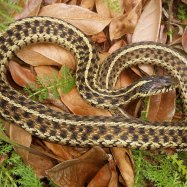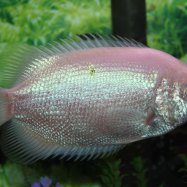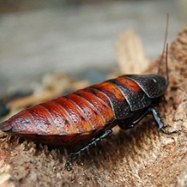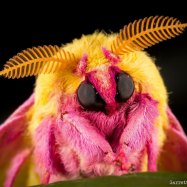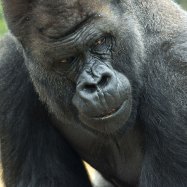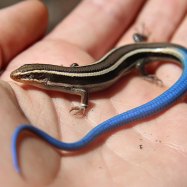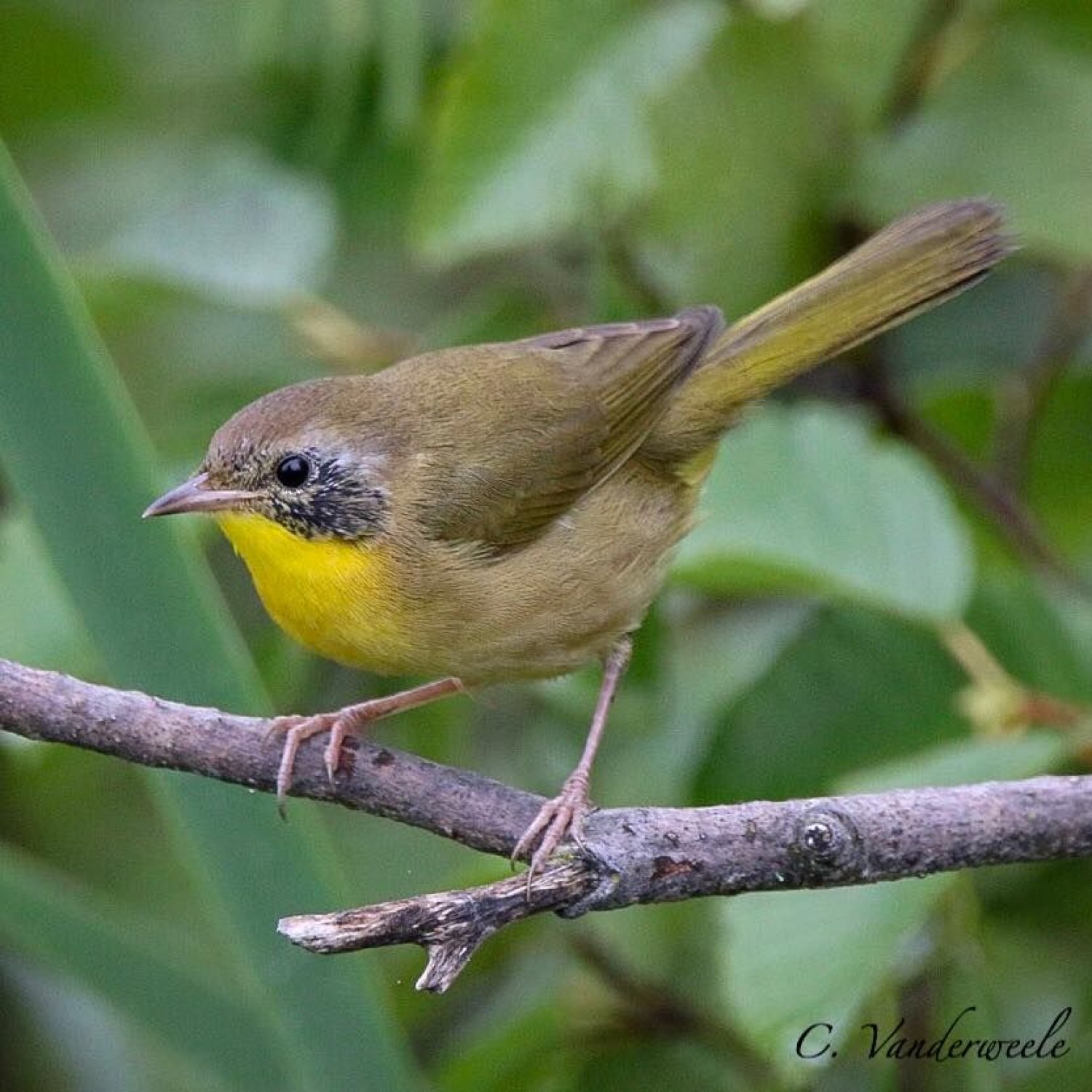
Common Yellowthroat
12-14 cm (4.7-5.5 in)
The Common Yellowthroat is a small bird found in North America. Known for its distinctive black mask, this chunky bird measures 12-14 cm in length and belongs to the Parulidae family. With a small, chunky body and short tail, it's a treat to spot these colorful birds in their natural habitat. #birdwatching #naturelovers #wildlife
Animal Details Summary:
Common Name: Common Yellowthroat
Kingdom: Animalia
Habitat: Wetlands, marshes, and thickets
Introduction
The world of birds is a fascinating one, filled with a diverse array of species ranging from majestic eagles to tiny hummingbirds. Among these feathered creatures is a small but charismatic warbler known as the Common Yellowthroat. This little bird may not be as flashy as its larger counterparts, but it has its own unique charm that has captured the hearts of many bird enthusiasts. With its bright yellow throat and distinctive call, the Common Yellowthroat is a beloved species in North, Central, and South America Common Yellowthroat.Taxonomy: Where does the Common Yellowthroat belong?
Before we dive into the world of the Common Yellowthroat, let us first understand its place on the taxonomic map. Scientifically known as Geothlypis trichas, it belongs to the Animalia kingdom, Chordata phylum, and Aves class. These classifications reflect its animalistic, vertebrate, and avian characteristics, respectively. Within the class Aves, the Common Yellowthroat belongs to the order Passeriformes, also known as perching birds. And within the perching birds, it belongs to the family Parulidae, also known as New World warblers. This family comprises more than 100 species, with the Common Yellowthroat being one of them.Habitat and Distribution
The Common Yellowthroat is a highly adaptable bird, making its homes in a wide range of habitats. However, it can mostly be found in wetlands, marshes, and thickets. It is no surprise that these habitats are favored by the Common Yellowthroat as they provide ideal nesting conditions and a plentiful supply of food Click Beetle. Wetlands and marshes are also known for their dense vegetation, providing ample hiding spots for these shy birds.This tiny warbler can be found in many parts of North, Central, and South America. Its breeding range covers most of the United States, with some parts of southern Canada and northern Mexico also being a part of their distribution. During the winter, they migrate south to warmer areas, which includes parts of Mexico, Central America, the Caribbean, and even some northern regions of South America. As elusive as they may seem, the Common Yellowthroat is a common sight in their native range, making it a favorite among bird-watchers.
Appealing Features of the Common Yellowthroat
As the name suggests, the most distinctive feature of this species is its bright yellow throat and breast. Males have a brilliant yellow plumage, while females have a more subdued, olive-yellow color. They also have olive upperparts, with brown streaks and a little black mask around the eyes, giving them a striking appearance.But their coloration is not just for show; it serves a purpose in their survival. The bright yellow throat and breast of the male act as a signaling mechanism, attracting females during the breeding season. It also serves as a warning to other males to stay away from their territory. The duller coloration of the female allows them to blend in with their surroundings, making it easier for them to protect their nests and young ones from predators.
The Common Yellowthroat also has a small, chunky body with a short tail, giving it a round and plump appearance. It measures around 12-14 cm (4.7-5.5 in) in length, making it one of the smaller warbler species. But what they lack in size, they make up for in charm and character.
Feeding Habits: Insectivorous Diet
The Common Yellowthroat feeds primarily on insects and other small invertebrates, making it an insectivorous bird. It uses its keen eyesight to spot its prey, and its agile and acrobatic movements enable it to hunt efficiently. Their diet includes a variety of insects, such as beetles, spiders, and caterpillars. They can even consume small fishes and fruits on occasion, adding some variety to their diet.Due to their small size, Common Yellowthroats tend to feed on tiny insects, making them an essential part of the ecosystem. They help control insect populations, which in turn, benefits the plants that these insects feed on. As they hop from branch to branch, picking at their food, they play a vital role in maintaining the balance of nature.
Courtship and Nesting
The breeding season of the Common Yellowthroat starts in late April and continues until mid-July. During this time, the male warblers will display their striking yellow plumage and their distinct “witchity-witchity-witchity” call to attract potential mates. The females will then choose a mate based on the male’s singing abilities, and the pair will continue to strengthen their bond through mutual preening and courtship.Once the pair has formed, they will start looking for a suitable nesting site. The female will do most of the building, making a cup-shaped nest using grass, bark, and plant fibers. She will also line the nest with feathers and soft materials to make it more comfortable for the eggs and young chicks. These nests are usually well-hidden and located close to the ground, making it a challenge to spot them.
Parenting and Threats
Once the eggs are laid, the female will incubate them for around 12-14 days until they hatch. Both the male and female will take turns feeding the chicks and protecting them from predators. The chicks will leave the nest after 9-12 days but will continue to receive parental care for another week before they can fend for themselves.Like many other bird species, the Common Yellowthroat faces threats from humans, such as habitat loss and fragmentation. The draining of wetlands and marshes for development projects has significantly impacted their breeding and foraging habitats. This not only affects the Common Yellowthroat but also other species that rely on these habitats for survival.
Another threat these birds face is the invasive species that prey on their eggs and young ones. Domestic and feral cats, snakes, and other birds such as crows are known predators of the Common Yellowthroat. This is why conservation efforts are crucial in maintaining the populations of these birds and their habitats.
Conclusion
In conclusion, the Common Yellowthroat is a charming warbler that has captured the hearts of many through its bright colors and unique behaviors. From their ability to adapt to different habitats to their important role in balancing ecosystems, these small birds play a big part in the natural world. Despite the threats they face, efforts are being made to protect and conserve this beloved species. The next time you are out in the wilderness or even in your own backyard, keep an eye out for the Common Yellowthroat – a beautiful bird that is truly one of a kind.

Common Yellowthroat
Animal Details Common Yellowthroat - Scientific Name: Geothlypis trichas
- Category: Animals C
- Scientific Name: Geothlypis trichas
- Common Name: Common Yellowthroat
- Kingdom: Animalia
- Phylum: Chordata
- Class: Aves
- Order: Passeriformes
- Family: Parulidae
- Habitat: Wetlands, marshes, and thickets
- Feeding Method: Insectivorous
- Geographical Distribution: North, Central, and South America
- Country of Origin: United States of America
- Location: North America
- Animal Coloration: Yellow throat and breast, olive upperparts
- Body Shape: Small, chunky body with a short tail
- Length: 12-14 cm (4.7-5.5 in)
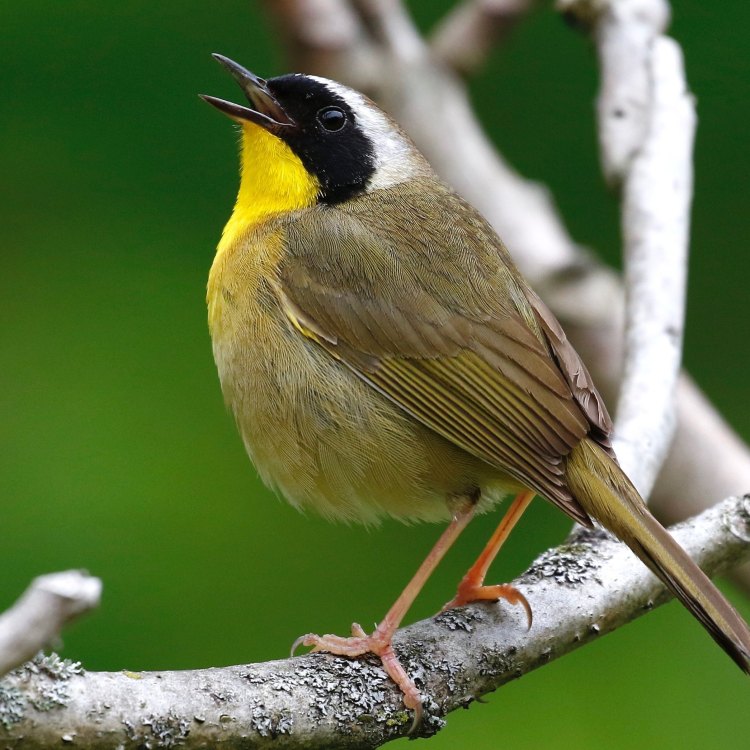
Common Yellowthroat
- Adult Size: Small
- Average Lifespan: 3-5 years
- Reproduction: Sexual
- Reproductive Behavior: Monogamous
- Sound or Call: Distinctive song consisting of a series of musical notes
- Migration Pattern: Migratory
- Social Groups: Solitary, territorial
- Behavior: Active and agile, often flicking its tail and flitting between vegetation
- Threats: Habitat loss, predation, climate change
- Conservation Status: Least Concern
- Impact on Ecosystem: Controls insect populations
- Human Use: Conservation efforts, birdwatching
- Distinctive Features: Yellow throat and breast, distinctive song
- Interesting Facts: The male Yellowthroats have a black face mask which the females lack
- Predator: Birds of prey, snakes, and mammals
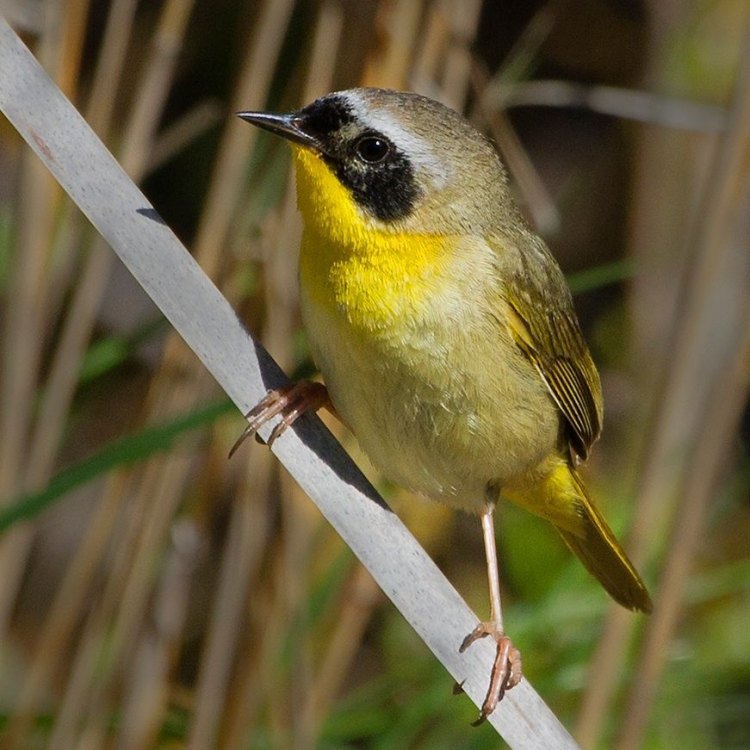
Geothlypis trichas
The Charming Common Yellowthroat: An Active and Vital Member of Our Ecosystem
In a world filled with exotic and colorful bird species, the Common Yellowthroat may seem like a plain and unassuming bird. However, this small and unassuming creature has some unique qualities that make it an essential and fascinating part of our ecosystem. From its distinctive breeding behavior to its charming appearance and vital role in controlling insect populations, the Common Yellowthroat is a bird worth learning more about.The Basics
The Common Yellowthroat (Geothlypis trichas) is a small-sized bird, measuring only four to five inches in length PeaceOfAnimals.Com. It is a migratory bird, traveling long distances from its breeding grounds in North America to its wintering grounds in Central and South America. It belongs to the warbler family, a group of small and often brightly colored birds known for their long-distance migrations.On average, the Common Yellowthroat has a lifespan of three to five years. However, some have been known to live up to eight years. Its reproductive behavior is sexual, with males actively seeking out females for mating during breeding season.
Distinctive Features
While the Common Yellowthroat may not stand out with its small size, it has distinctive features that make it easily recognizable. Both male and female Yellowthroats have a yellow throat and chest, which gives them their name. However, only the males have the added feature of a black mask across their face, making them look like masked bandits.Aside from its bright colors, the Common Yellowthroat also has a distinctive song, consisting of a series of musical notes Cat. Its call is often described as a "witchity-witchity-witchity," making it easily identifiable even without seeing the bird itself. This is a characteristic feature of warblers, who use their songs to attract mates and defend their territory.
Reproduction and Behavior
During breeding season, the male Common Yellowthroat will establish a territory by singing and vigorously defending it from other males. Once a female enters his territory, he will perform a courtship display, including spreading his wings and puffing out his chest feathers. If the female is impressed, they will become monogamous partners and raise offspring together.The female will build a dome-shaped nest on the ground, often hidden in dense vegetation. She will lay 3-5 eggs, which she will incubate for about 12 days. Both parents will take turns feeding the chicks until they fledge after 8-10 days. The pair will then continue to raise additional broods for the rest of the breeding season.
The Common Yellowthroat is an active and agile bird, often flicking its tail and flitting between vegetation in search of insects. It is a solitary and territorial bird, preferring to hunt and live alone. However, during migration, they may gather in flocks to travel long distances together.
Vital Role in the Ecosystem
The Common Yellowthroat may seem like just another pretty bird, but its role in our ecosystem goes far beyond its appearance. As insectivores, they play a crucial role in controlling insect populations, making them essential for maintaining a healthy ecosystem. In fact, a study by the Smithsonian Migratory Bird Center found that areas with higher numbers of warblers, including the Common Yellowthroat, had significantly lower levels of insect damage in their crops.Threats and Conservation Status
Unfortunately, like many other bird species, the Common Yellowthroat faces threats to its survival. Habitat loss is a significant threat as urbanization and agriculture continue to encroach on their preferred nesting and foraging areas. Predation from birds of prey, snakes, and mammals also poses a risk to their survival.Climate change is another significant concern, affecting the timing of their migration and available resources in their breeding and wintering grounds. As a migratory bird, any disruption in their journey can have severe consequences for their survival.
Despite these threats, the Common Yellowthroat has a conservation status of "Least Concern" by the International Union for Conservation of Nature (IUCN). This means that their population is not currently declining at a rate that warrants a higher level of concern. However, this does not mean that conservation efforts should be disregarded, as vigilance is still necessary to protect this valuable species.
Human Use and Conservation Efforts
While the Common Yellowthroat may not have any commercial value, it is still highly valued by birdwatchers and naturalists. Its distinctive appearance and behavior make it a sought-after sighting for birdwatchers, who often travel long distances to catch a glimpse of this elusive bird.To protect the Common Yellowthroat and other migratory bird species, various conservation efforts are in place. In North America, the Migratory Bird Treaty Act of 1918 protects these birds from exploitation, while organizations like the National Audubon Society work to preserve and restore their habitats. Additionally, individuals can support conservation efforts by creating bird-friendly spaces in their gardens and reporting any sightings of the Common Yellowthroat to authorities.
Interesting Facts
Like most creatures, the Common Yellowthroat has some interesting and lesser-known facts that make it even more intriguing. One of the most fascinating facts about this bird is the difference in appearance between males and females. While the males have the distinctive black mask, the females lack this feature, making them easily mistaken for a different species.Another interesting fact is that the Common Yellowthroat is often described as "hyper-local," meaning that they have a strong attachment to their specific territory and rarely venture far from it. Even during migration, they will return to the same location each year, often to the same spot within that location.
In Conclusion
The Common Yellowthroat may seem like just another small, yellow bird, but as we've discovered, it is a vital and captivating member of our ecosystem. From its distinctive appearance and song to its active and agile behavior, this bird has many qualities that make it worth learning more about. Its role in controlling insect populations and its value for birdwatchers and conservation efforts further solidify its importance in our world. So next time you come across a Common Yellowthroat, take a moment to appreciate this charming and essential bird.
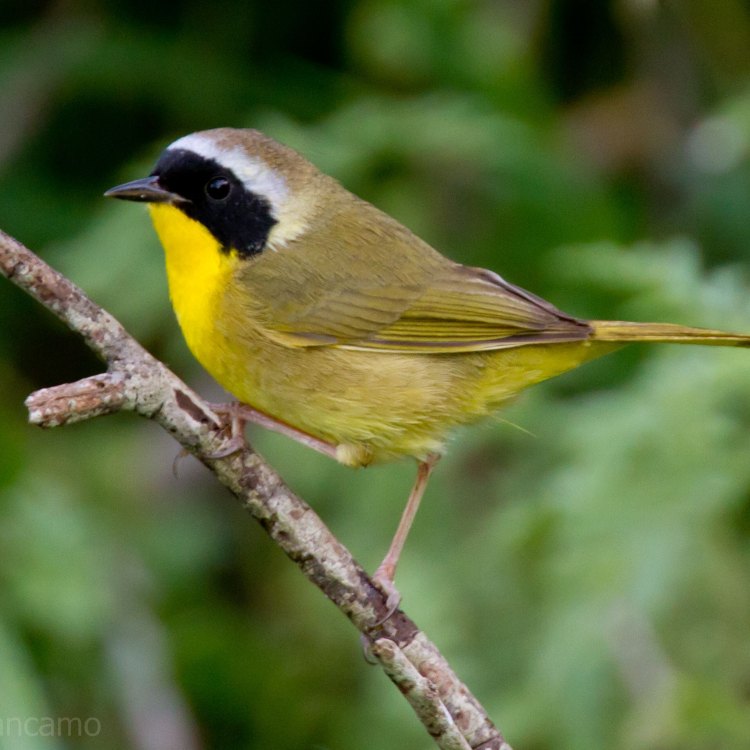
Introduction
Disclaimer: The content provided is for informational purposes only. We cannot guarantee the accuracy of the information on this page 100%. All information provided here may change without prior notice.


